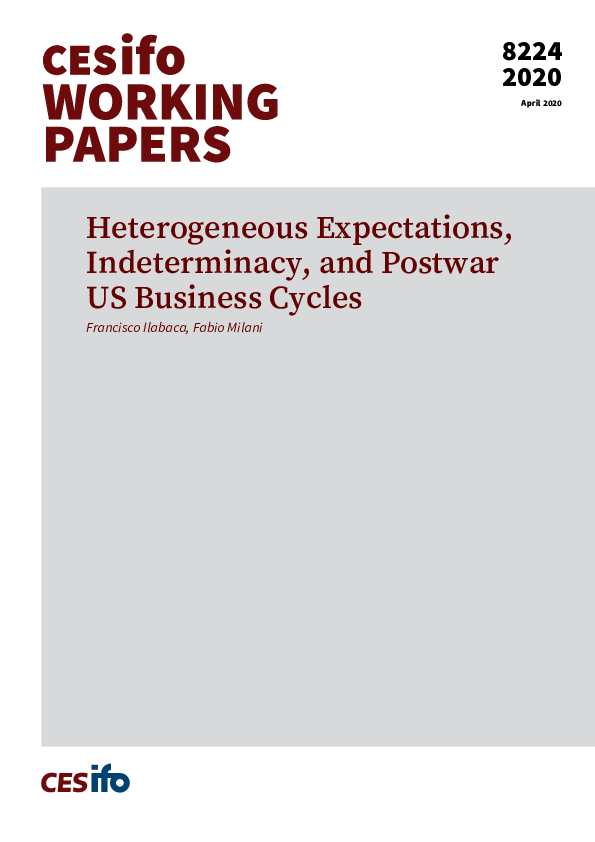Heterogeneous Expectations, Indeterminacy, and Postwar US Business Cycles
CESifo, Munich, 2020
CESifo Working Paper No. 8224

This paper estimates a New Keynesian model extended to include heterogeneous expectations, to revisit the evidence that postwar US macroeconomic data can be explained as the outcome of passive monetary policy, indeterminacy, and sunspot-driven fluctuations in the pre-1979 sample, with a switch to active monetary policy and a determinate equilibrium starting in the early 1980s. Different shares of consumers and firms form either rational expectations, or adaptive and extrapolative expectations. The inclusion of heterogeneous expectations alters the determinacy properties of the model compared to the corresponding case under exclusively rational expectations. The Taylor principle is neither necessary nor sufficient, as the details of expectations may matter more for equilibrium stability. The model is estimated with Bayesian techniques, using rolling windows and allowing the parameters to fall both in the determinacy and indeterminacy regions. The estimates reveal large shares of agents who depart from rational expectations; heterogeneous expectations are preferred by the data everywhere in the sample. The results confirm that macroeconomic data in the early windows are better explained by indeterminacy, while determinacy is favored over the latest two decades. We uncover, however, some subsamples that include the 1980s and 1990s in which the Taylor principle is satisfied, but expectations becoming extrapolative raise the probability of indeterminacy to 50% and more.
Monetary Policy and International Finance